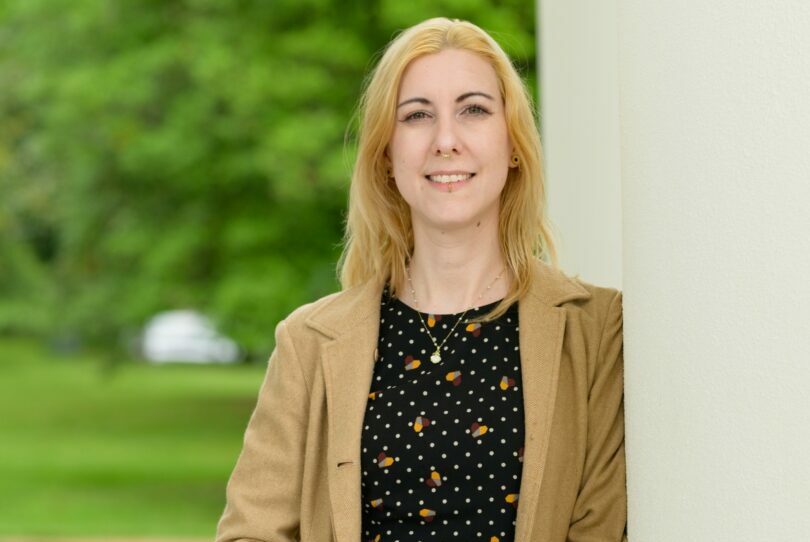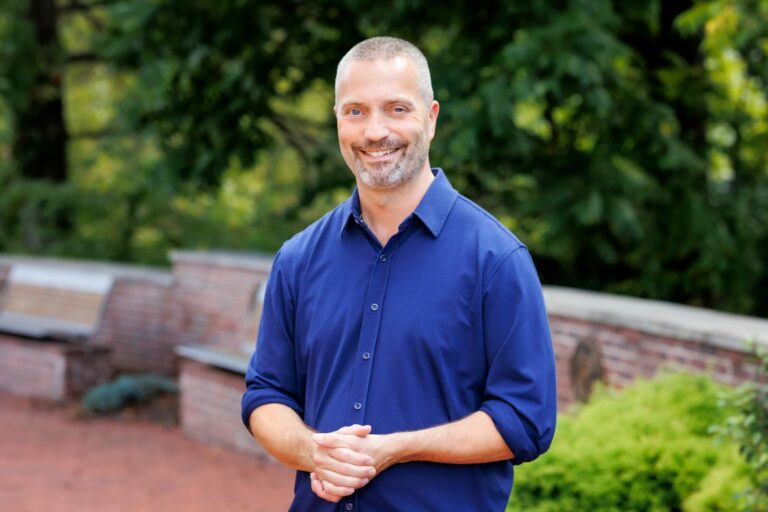We’re excited to introduce you to the always interesting and insightful Meg Malone. We hope you’ll enjoy our conversation with Meg below.
Meg, thank you so much for making time for us. We’ve always admired your ability to take risks and so maybe we can kick things off with a discussion around how you developed your ability to take and bear risk?
I was not an inherent risk-taker. As a kid, I was cautious and internal. I became aware very early on that I was different from the other kids I had access to. My head was full of stories and art. I wanted to create and live this big, bold life, but I had no idea where or how to start. Because I felt like an odd-ball, I gravitated towards more comfortable situations where I could vanish. I wove this world in the walls where I could slip away, go unnoticed, and be in-between the realities that made very little sense to me.
All that changed when I got cancer. In 2007, I woke up in my dorm room with these plush bruises all over my legs. Up and down, hips to ankles. My heart instantly seized and some instinctual part of me knew that whatever path I’d been living up to that point was over.
I got out of bed, I took a shower, I went to class. I remember vividly the crush of students in the stairwell after my History course.
A day or two later, at the age of 20, I was diagnosed with Acute Promyelocytic Leukemia, a rare form that doesn’t typically occur in young women. I was told that if I survived the first week, my chances were good. Normally, death is a distant concept at that age. The afternoon they told me, I remember this white buzzing filling up my skin, as if my mind was physically trying to lift me away from my body. That night, it hit me, this sudden wall of water, that I could actually die. That the odds of it were unusually high. That buzzing popped and I was left there to feel my skin with no way out.
I spent a year in intensive chemotherapy and another four in maintenance. During that first year, all I could think about was getting back to school. I couldn’t even sit up most days, but it was all I wanted. There was this concept of “normalcy” that I became obsessed with, but it was about a lot more than just being young again. I remember panicking that I hadn’t done anything. I’d been complacent and it filled me with dread to think about that being it. That I’d never get the chance to take chances. I needed to get back to living. I needed to do better, a feeling compounded as other young people around me died.
I was extremely lucky. I didn’t do anything special to survive. I didn’t eat a fancy diet or have a stronger will. I don’t believe I was meant to survive as some cosmic plan. I just did somehow. And when I got back to Illinois State in 2008, still recovering, still taking chemo meds, still throwing up before class, and still getting hospitalized—I knew I couldn’t just be comfortable. I couldn’t go back to living in-between.
If I feel something is worth the fight, or it’s a great adventure, a shift from unhappiness, a place to be meaningfully challenged and become a little changed—I have to take that chance. It’s in my bones now, bound up tight in my repaired DNA.
Ever since, I’ve sought to lead a creative and abundant life. I’ve lived in cities and small towns, moved to British Columbia, Iowa, Milwaukee, Maine, and San Francisco. I’ve built a supportive community of friends and family. I live by my curiosity and the natural change that comes with it. In many ways, I’m still discovering what stability and fulfillment can look like for a creative (and a woman), but I know that it’s not one thing. For me, I’m following my own little white rabbit, always re-interpreting and cultivating what I need in the present to create, contribute, and feel meaningful. In the end, though, I simply love that life is unpredictable; I love that we continuously change.
I think what I’ve learned is that life, itself, is risky. There’s risk in comfort; there’s risk in the unconventional. There’s no foolproof plan. There’s no ideal age. There’s no right amount of money. There’s no safe way to be alive. The only thing that matters is that you’re happy, those around you are happy, and you have community, whatever that looks like. Life is big and beautiful, painful, terrifying, electric. It’s not even always short. There are plenty of days where life feels so gaping it’s overwhelming. And then there’s a profound rush. Risk is a part of living, and I never forget that I’m very lucky to be alive.
Thanks for sharing that. So, before we get any further into our conversation, can you tell our readers a bit about yourself and what you’re working on?
First and foremost, I’m a speculative fiction writer. Lately, I’ve been inspired to start pushing at the boundaries of writing, narrative, and print and to redefine what my craft looks like in a physical form.
My academic interests in Anglo-Saxon literature and history, Arthurian Literature, and Richard III inspire my work and have led me to enjoy the episodic mode of short writing. I mostly write short stories and have been working at a few different novel-length projects since the pandemic started, all largely focused on challenging women’s roles and/or omissions in either the Middle Ages or folklore.
What I’ve learned from research is that writing is far from stagnant, even in a seemingly final printed form. There’s a living, breathing quality about it that opens a sort of iterative dialog between generations. As a writer, I feel like I’m poking my head into a very long conversation where word, mode, medium are all nebulous and interpretive. Given my past, I feel a strong pull to unpack and upend mortality, to find hard edges, and to forward female characters who exist in non-traditional narratives. By redefining my medium, I’m hoping to find a more expansive way to tell my stories the way they want to be told, all of which starts with interrogating the book form, writing as visual art, and white space/marginalia.
Looking back, what do you think were the three qualities, skills, or areas of knowledge that were most impactful in your journey? What advice do you have for folks who are early in their journey in terms of how they can best develop or improve on these?
That’s a tough one. I would say perseverance, more than anything, is vital for any creative. Most skills can be learned, talent more commonly comes from practice. The hardest thing to do as a creative is to stick with it, day after day. Especially as a writer, we spend a massive amount of time alone and our work is harder to share in an immediate way. It can be difficult to feel like it’s worth it. The biggest barrier to finishing is usually ourselves, so learning to persevere through tough writing days or the dreaded blockage is critical. It makes all the difference.
Also for me, and I throw this out there with a big asterisk behind it, is passion. I qualify this because I think, generally, passion is overemphasized. It’s not felt on a daily basis and one person’s passion is not another’s in form, feeling, or expression. We can certainly create with intent because we think it’s worthwhile, and not because it’s the backbone of why we’re living and breathing. What I do think is important about passion is knowing what we do care about and what it feels like to care that deeply. Coming back to what makes us feel passionate is grounding, even if not’s immediately relevant to the project on the table. It reminds us why we wanted to create in the first place.
Which brings me to the third one—England in the Middle Ages. I can’t even fully define why this historical period or place matters so much to me, and I hope I never can. After I went back to school, my very first class was a survey course in British Literature. The medieval lit professor, Susan Kim, showed me I’d been living tucked up inside a shell. The incredible mystery of this age, the lack of complete writings, the fragility and endurance of historical records and people in the face of time, invasion, fire transformed me. At first, I think I saw a backbone for my own crumbled pre-cancer existence in these stories of thegn loyalty, Viking invasions, the Norman Conquest. It helped me make sense of a thoroughly sense-defiant time because a lot of what I read back then was tragic: the loss of loves, land, and liege-lords. Yet they’re writing. There’s a sense of afterwards. I needed that. Today, I look more at the omissions and holes. The women who are either never mentioned or barely, like Æthelflæd of Mercia. I’m obsessed with excavating and finding voices that were always there, just forgotten or obscured. The best I can do is imagine them, but my hope is that creative work helps cheer on the true scholars who are, right now, working diligently to bring these women back into the light of history.
With all this in mind, my advice to folks starting out is to find an obsession and follow it. Risk is an inherent part of creating, so just be present, put in the work, and believe that you’re working towards a worthwhile story. Don’t worry so much about what other people think. Creating and living creatively has a lot to do with perspective. So wield yours, care deeply about weird things, and enjoy. The writing will improve as you practice, the story will get clearer with each draft. Someone else might love it or it might be meant just for you. In the end, you have these creative-filled days. And that’s utterly beautiful.
As we end our chat, is there a book you can leave people with that’s been meaningful to you and your development?
There have been a lot, but <i>Arachnid Orchestra. Jam Sessions</i> by Tomás Saraceno is having the biggest impact on my current practice. I discovered this book at Printed Matter in Chelsea, flipped through it a dozen times and then foolishly didn’t buy it. Eventually I got obsessed and reached out to their Bibliographic Services team four years later to track it down. The printed book is gorgeous and includes an audio file nested inside the cover panels. It’s academic, philosophical, printed matter, and performance, all layered together. This book about translating spider webs and spider body movements into “arachnid instruments” was the first time I realized how wide open and undefinable the art world and book forms really are.
In a more traditional sense, <i>Stay Inspired: Finding Motivation for Your Creative Work</i> by Brandon Stosuy helped get me out of a slump. I appreciate that this book works for a lot of skill levels. I’ve been a professional copywriter for a decade, and the writing advice still feels on point. I particularly connected with a section towards the end with the quote: “…have faith in meandering” (108). It can be hard to move organically through our work. Some ideas come in and then take their sweet time unfolding. Others drop like lightening in the middle of the night. New curiosities feel like a distraction we should resist. This book reminded me how normal all that is and how different the act of creating is for all of us. It dusted off and shifted my perspective in very beneficial ways around inspiration (find it wherever it finds you/do research), creative output (looks really different on different days), and the creative process (go with it and stick with it).
Contact Info:
- Website: megmalonewrites.com
- Instagram: @megmalonewrites










